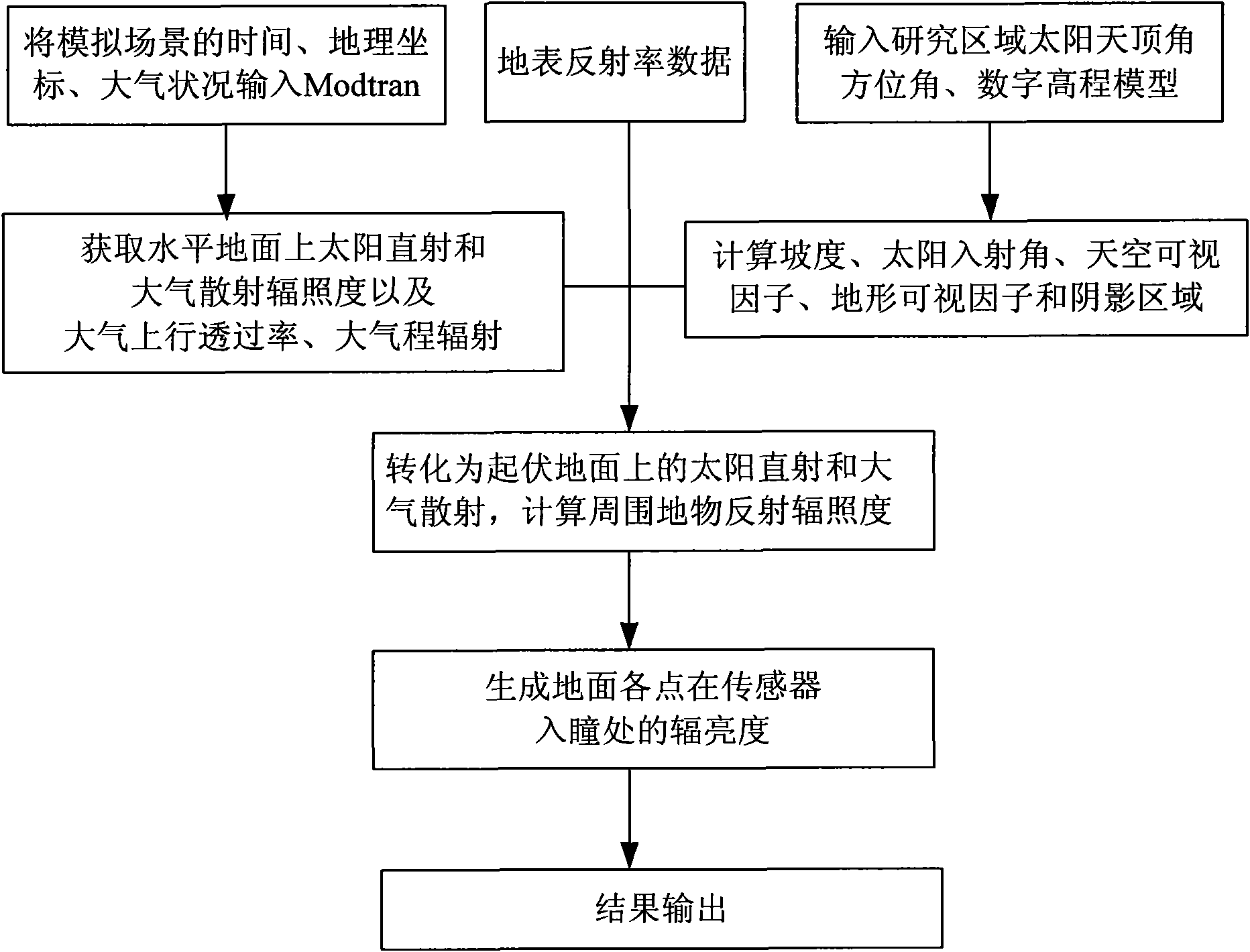Method for realizing rugged topography remote sensing scene simulation
A technology of scene simulation and terrain, applied in the field of remote sensing imaging simulation, can solve the problems of complex and changeable surface conditions, low accuracy of simulation results, and errors in simulation results, and achieve the effect of overcoming simulation errors, improving simulation accuracy, and high-precision simulation.
- Summary
- Abstract
- Description
- Claims
- Application Information
AI Technical Summary
Problems solved by technology
Method used
Image
Examples
Embodiment Construction
[0037] Taking the remote sensing scene simulation process in the Qulong area of Tibet as an example, as follows: figure 1 Shown, the concrete implementation method of the present invention is as follows:
[0038] (1) Input the simulated scene time, geographic coordinates, and atmospheric conditions into Modtran to obtain direct solar and atmospheric diffuse irradiance on the horizontal ground, atmospheric uplink transmittance, and atmospheric pass radiation.
[0039] A digital elevation model with a ground resolution of 30m and surface albedo data in the Qulong area of Tibet is used. The simulation scene time is set at 10:6:56 am on April 3, 2002, the atmospheric condition is mid-latitude summer in the US standard atmosphere, and the geographical coordinates of the regional center are 29.98°N, 36.37°E. Run Modtran multiple times to obtain the direct solar irradiance received by the horizontal ground, atmospheric diffuse irradiance, atmospheric uplink transmittance, and at...
PUM
 Login to View More
Login to View More Abstract
Description
Claims
Application Information
 Login to View More
Login to View More - R&D
- Intellectual Property
- Life Sciences
- Materials
- Tech Scout
- Unparalleled Data Quality
- Higher Quality Content
- 60% Fewer Hallucinations
Browse by: Latest US Patents, China's latest patents, Technical Efficacy Thesaurus, Application Domain, Technology Topic, Popular Technical Reports.
© 2025 PatSnap. All rights reserved.Legal|Privacy policy|Modern Slavery Act Transparency Statement|Sitemap|About US| Contact US: help@patsnap.com



